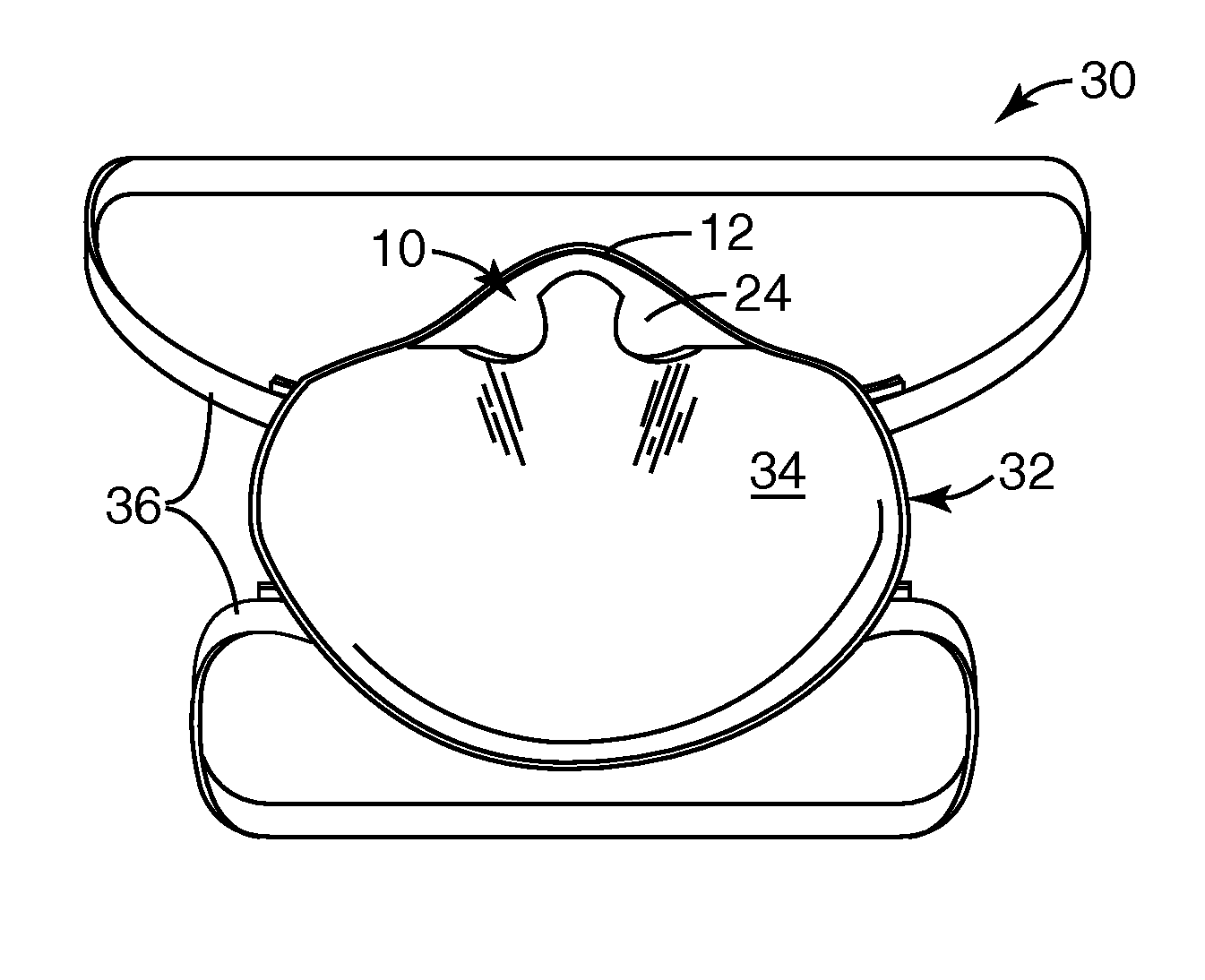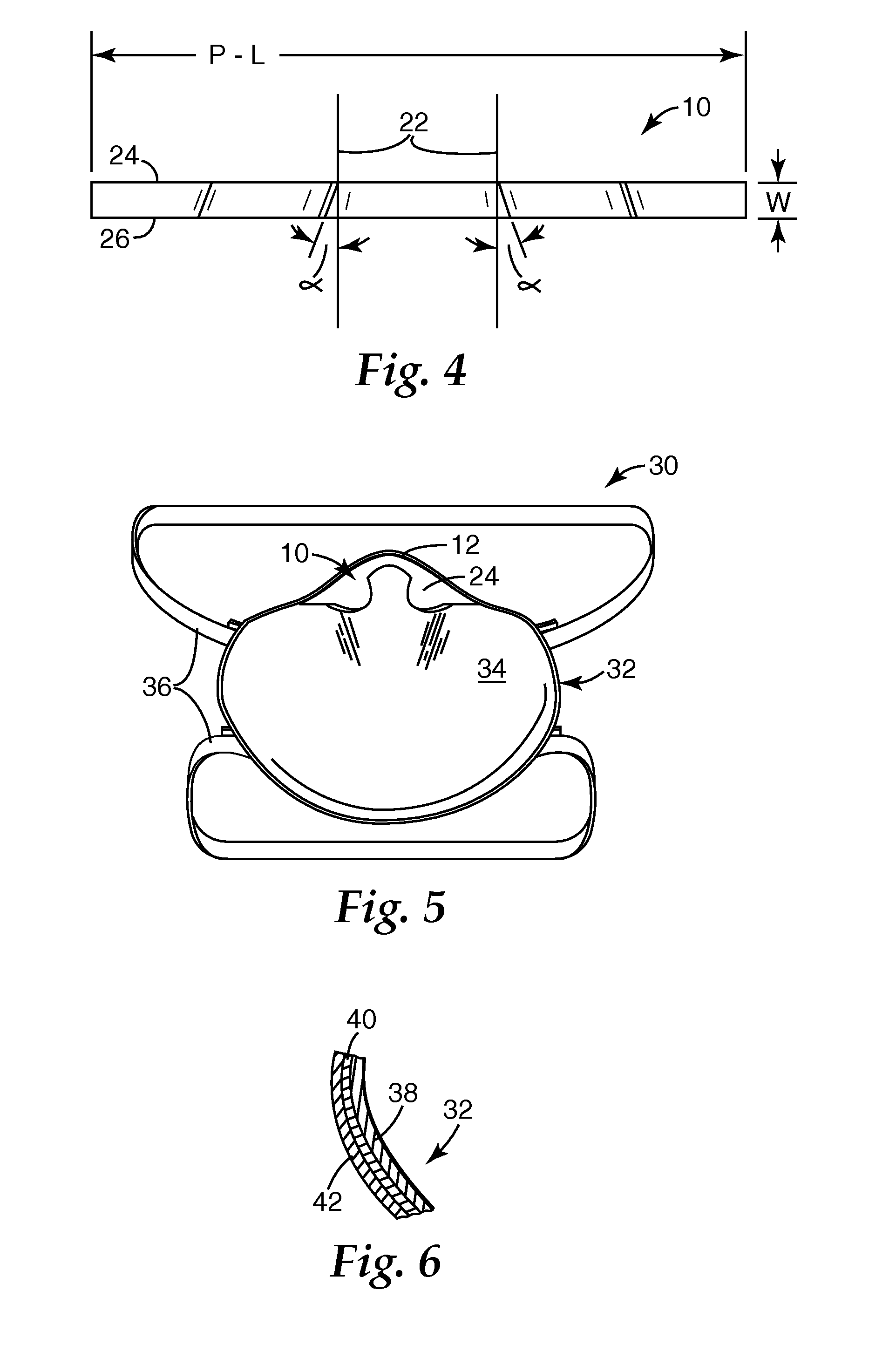Respirator That Uses A Predefined Nose Foam Shape
- Summary
- Abstract
- Description
- Claims
- Application Information
AI Technical Summary
Benefits of technology
Problems solved by technology
Method used
Image
Examples
example 1
[0069]UCAR Latex 154S and HYPO 2002 (from Dow Chemical Company, Midland, Mich.) prepolymer were used as starting materials to cast a three-dimensional polyurethane nose foam. Forty grams (g) of HYPO 2002 and 60 g of UCAR were mixed in a disposable plastic container using a mechanical blade mixer and were poured into a mold that had three cavities. The cavities were dimensioned to provide a nose foam that had a projected length P-L of about 105 mm, a thickness A in the central portion of 6 mm, and a thickness B in the first and second side contacting portions of 15 mm. The width W of each of the cavities was about 15 mm. The mold was pre-sprayed with release agent (Endurance Mold Release A353 made by Stoner, Quarryville, Pa.) before the pre-polyurethane mixture was poured into it. After about 10 minutes, the partially cured polyurethane foam was removed from the mold and was put into an oven maintained at 60° C. overnight to achieve full curing. The material was allowed cool to room ...
example 2
[0070]This Example was prepared as described above in Example 1, except the nose foam was secured to a standard 3M 8210 respirator with the original nose clip and nose foam removed.
example 3
[0071]Double layered Foamex foam (Foamex, E. Rutherford, N.J.) foam was used to cut a nose foam that had a projected length P-L of 97 mm, a central portion thickness A of 7 mm, a side-contacting portion thickness B of 15 mm, a width W of 15, an angle α of 7°, and an angle β of 48°. A 7.5 mm thick section of foam was laid together back-to-back with another section to create a thicker foam of 15 mm thickness. The foam was then carved into the shape having the dimensions indicated above using a surgical knife and scissors. The carved nose foam was then attached to an 8511 respirator by using a 3M 9917 Double-coated Nonwoven tape, with the aluminum nose clip removed.
PUM
 Login to View More
Login to View More Abstract
Description
Claims
Application Information
 Login to View More
Login to View More - R&D
- Intellectual Property
- Life Sciences
- Materials
- Tech Scout
- Unparalleled Data Quality
- Higher Quality Content
- 60% Fewer Hallucinations
Browse by: Latest US Patents, China's latest patents, Technical Efficacy Thesaurus, Application Domain, Technology Topic, Popular Technical Reports.
© 2025 PatSnap. All rights reserved.Legal|Privacy policy|Modern Slavery Act Transparency Statement|Sitemap|About US| Contact US: help@patsnap.com



